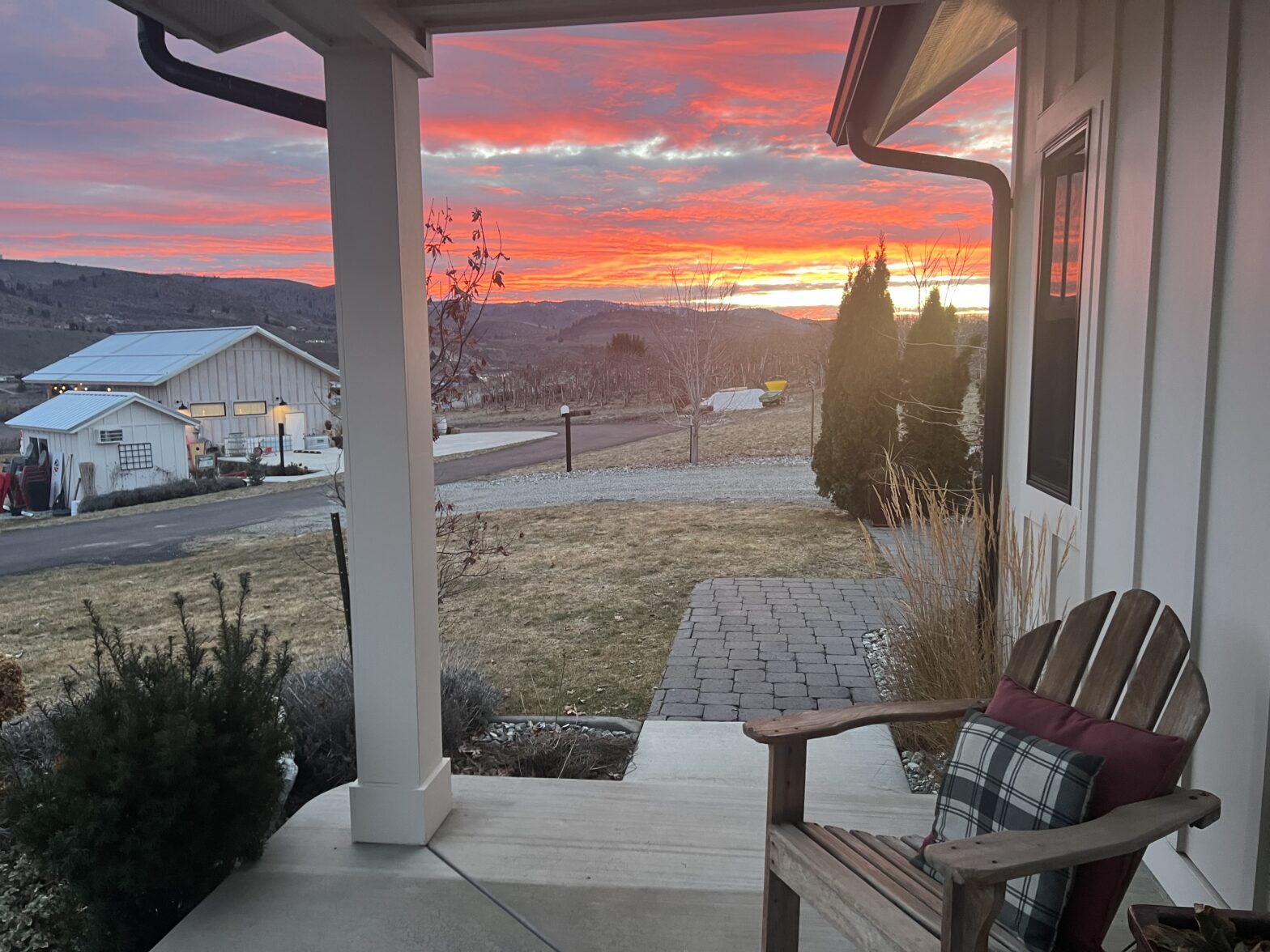Since we’re a small farm, many of the farm activities are hands on.
by Chad Steiner
2024 is our family’s 6th year living on the farm. We’re 1st generation farmers. In the year 1900 our “type” of farming operation may have been more common – animals & crops. Today’s farm numbers show there’s a bunch of small farms (we’re one of them) and a smaller number of very large farms. Large farms may have a “team” of people and economies of scale because of size. Because our farm is small, when it wakes up in the spring – it’s all hands on deck. A common question we get is – “how do we get it all done?”. We’re determined to continue to make our small farm a destination we can share with others. We love hosting you and your families, sharing our farm grown wines, flowers, apples and pumpkins.
What is the size of U.S. farms?
About 2/3 of U.S. farms are small farms whether measured by gross farm income or acres. And, as you’ll see in this direct quote below from the USDA, the face of U.S. agriculture has changed a lot in the last 100 years. “After peaking at 6.8 million farms in 1935, the number of U.S. farms fell sharply until the early 1970s. Rapidly falling farm numbers during the earlier period reflected growing productivity in agriculture and increased nonfarm employment opportunities. Since 1982, the number of U.S. farms has continued to decline, but much more slowly. In the most recent survey, there were 1.89 million U.S. farms in 2023, down 7 percent from the 2.04 million found in the 2017 Census of Agriculture. Similarly, acres of land in farms continued a downward trend with 879 million acres in 2023, down from 900 million acres in 2017. The average farm size was 464 acres in 2023, only slightly greater than the 440 acres recorded in the early 1970s.”
This is from USDA’s ERS – click here to see the full article.
What does waking up on the farm look like this time of year?
I thought it would be helpful to provide farm size for context. Our farm is small which means less activities are automated. That doesn’t mean we’re not trying to work smart. i.e. investing in automation when we can. It just might mean something automated is a better fit on a larger farm due to the cost of the equipment. Therefore, waking up on the farm this time of year starts to get really busy. And it’s the time of year where the longer days provide the opportunity to spend more time outside. It’s a favorite time for us – getting up, getting ready for the day then heading out to work on projects. I’m going to list what’s in front of us this next month. We’ve got some cool projects in store, along with annual chores.
- Pruning:
- Apples
- Grapes
- Raspberries
- Blueberries
- Irrigation (turns on middle of April):
- Fix broken lines.
- Check entire system
- Emitters to each grape plant.
- Sprinklers in orchard.
- Grafting & Tree Removal
- Prepare trees for grafting.
- Remove parts of the orchard (galas), but we’re leaving enough for u-pick.
- Flower Planting
- Succession planting seeds.
- Dividing dahlias.
- Preparing beds for planting.
- Animals
- Finish the sheep condo.
- Expand the chicken coop.
- Deep clean the chicken coop.
- Move the sheep with the mobile fence into the vineyard.
- Bee’s
- Diagnosing why our hive died.
- Getting ready to have 4 hives this year.
- A lot of other things
- Supporting Wine club.
- Wine making.
- Finances.
- Promotion of the business.
- Planning.
- Site maintenance.
- Equipment maintenance.
How do we get it all done?
So how do we get it all done? This is a question we often hear. Speaking openly, we feel like it’s never all done and we’re still figuring it out. Now that Jeana and I are working together full time it’s been a bit of an adjustment. If I had to summarize it would be 1. Planning and 2. Leverage. Let me explain planning first. Jeana and I have started meeting twice per week. This has started to get us into a place where we’re running the business and its not running us. We discuss priorities and prepare for the coming week ahead of the coming week. What do I mean by leverage? There’s nothing better than something going from a “should” to a “must”. This “should” get done to this “must” get done. A great example – hosting a group for a farm tour, we get things tidied up pretty quick in preparation. But there are things like organizing our garage that still need more leverage to move up the priority list. Maybe we sign up for a garage tour. When it comes to farm activities mother nature leaves no choice. Pruning has to be done on time. Seeds have to be planted on time. Mother nature rewards the timeliness of these activities, and it is challenging if we don’t “act” during the proper windows of time. Regardless of what I describe here – we’re still trying to figure it out.
Conclusion
The face of U.S. agriculture has changed immensely in the last 100 years. We’re so happy to be first generation farmers building something we can share with you all. We feel like that’s the beauty of small farms – you can connect directly with them. And waking up on the farm this time of year is exciting and full of energy. It becomes very clear what needs to be done. It provides focus. It opens the doors to possibility as the new crops grow and develop. The work done now produces the “fruits” we get to harvest with all of you later in the year. Thank you for following our journey. If you’d like to wake up on the farm with us – you’re welcome to find an open spot in our guest house, then just let us know, we might be able to put something together. Have a great weekend everyone!
Cheers,





WOW! That’s A LOT to do in a months time. Keep up the great work and thank you for educating us in the process! I’m tired just reading all of it.
Sorry for the delay Tracie. Thanks for the encouragement. We love it. Have an amazing weekend!